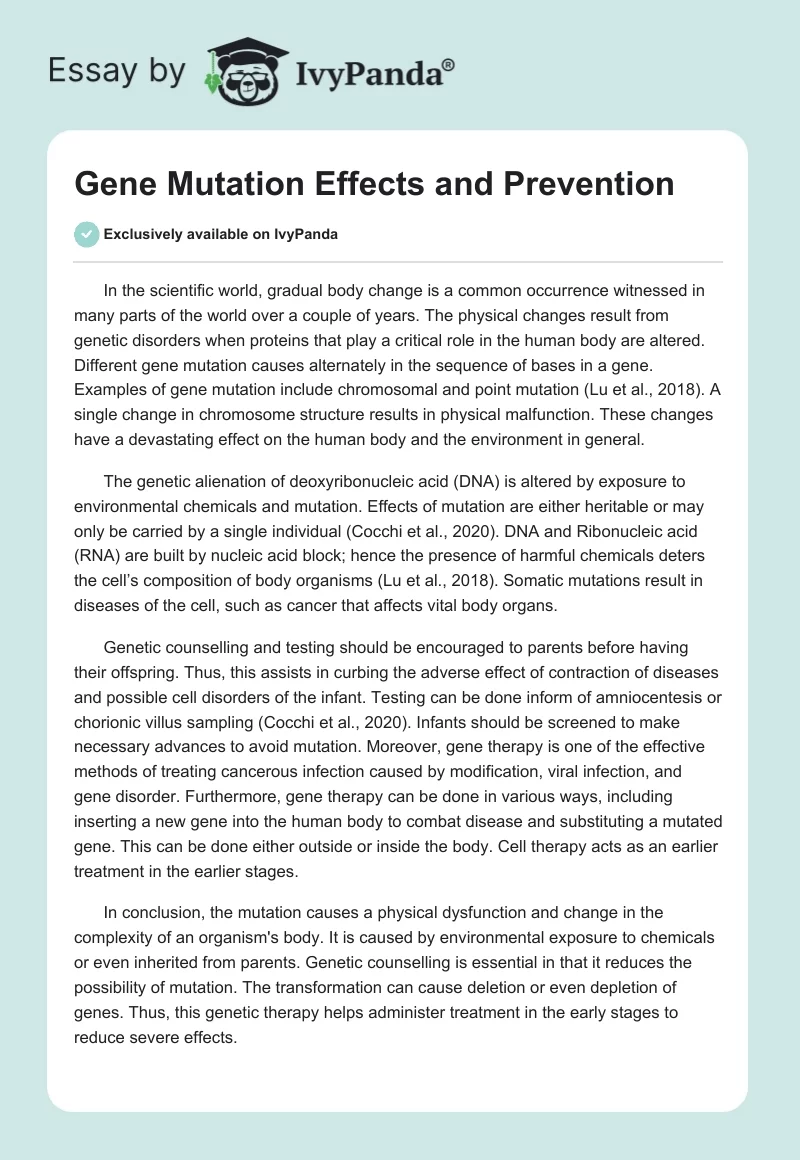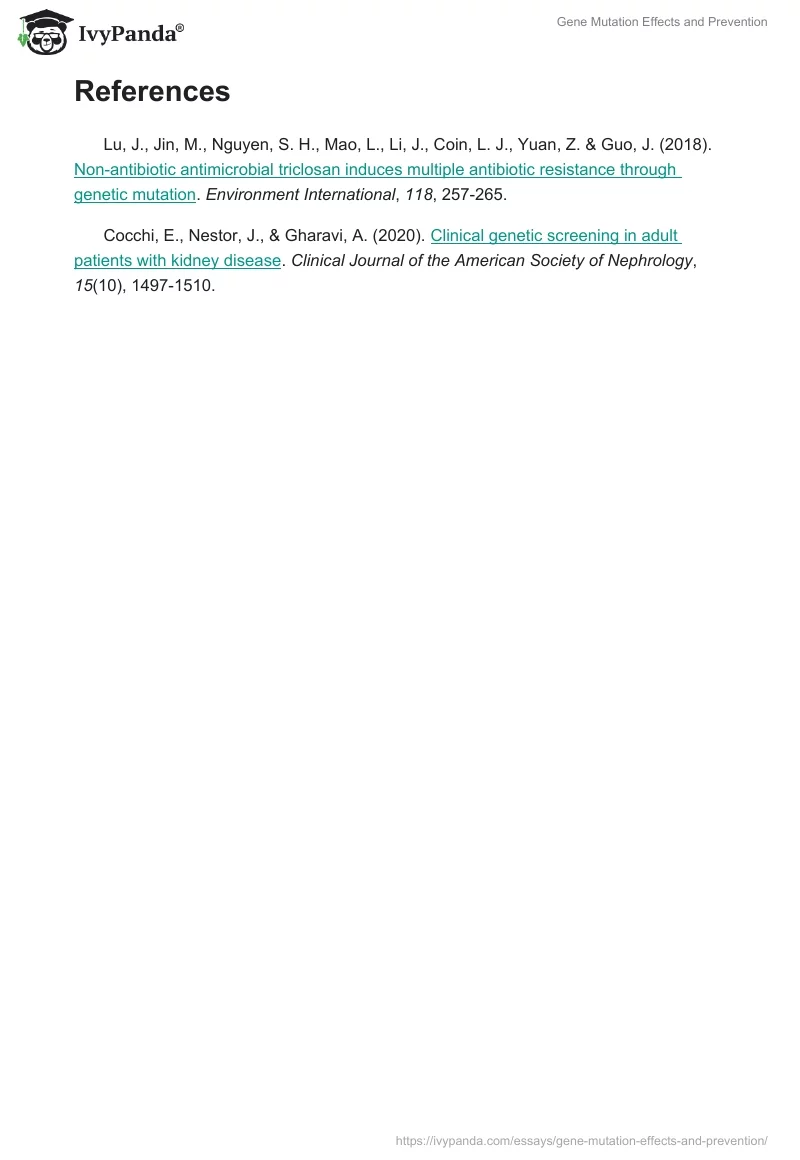In the scientific world, gradual body change is a common occurrence witnessed in many parts of the world over a couple of years. The physical changes result from genetic disorders when proteins that play a critical role in the human body are altered. Different gene mutation causes alternately in the sequence of bases in a gene. Examples of gene mutation include chromosomal and point mutation (Lu et al., 2018). A single change in chromosome structure results in physical malfunction. These changes have a devastating effect on the human body and the environment in general.
The genetic alienation of deoxyribonucleic acid (DNA) is altered by exposure to environmental chemicals and mutation. Effects of mutation are either heritable or may only be carried by a single individual (Cocchi et al., 2020). DNA and Ribonucleic acid (RNA) are built by nucleic acid block; hence the presence of harmful chemicals deters the cell’s composition of body organisms (Lu et al., 2018). Somatic mutations result in diseases of the cell, such as cancer that affects vital body organs.
Genetic counselling and testing should be encouraged to parents before having their offspring. Thus, this assists in curbing the adverse effect of contraction of diseases and possible cell disorders of the infant. Testing can be done inform of amniocentesis or chorionic villus sampling (Cocchi et al., 2020). Infants should be screened to make necessary advances to avoid mutation. Moreover, gene therapy is one of the effective methods of treating cancerous infection caused by modification, viral infection, and gene disorder. Furthermore, gene therapy can be done in various ways, including inserting a new gene into the human body to combat disease and substituting a mutated gene. This can be done either outside or inside the body. Cell therapy acts as an earlier treatment in the earlier stages.
In conclusion, the mutation causes a physical dysfunction and change in the complexity of an organism’s body. It is caused by environmental exposure to chemicals or even inherited from parents. Genetic counselling is essential in that it reduces the possibility of mutation. The transformation can cause deletion or even depletion of genes. Thus, this genetic therapy helps administer treatment in the early stages to reduce severe effects.
References
Lu, J., Jin, M., Nguyen, S. H., Mao, L., Li, J., Coin, L. J., Yuan, Z. & Guo, J. (2018). Non-antibiotic antimicrobial triclosan induces multiple antibiotic resistance through genetic mutation. Environment International, 118, 257-265.
Cocchi, E., Nestor, J., & Gharavi, A. (2020). Clinical genetic screening in adult patients with kidney disease. Clinical Journal of the American Society of Nephrology, 15(10), 1497-1510.


